Iter Stellarum
The Big Work of the Ways to Santiago
No other work to date has provided such a global vision of the Way as the “route of routes” that it is, going deeply into all the aspects of this and, above all, dealing with all the routes. The big work of the Ways to Santiago. Iter Stellarum” fills this gap.
Beyond religious and human sides, landscape and artistic elements, as well as the contact itself with people and costumes, have turned this old route into a cultural way, into a spirituality way towards Galicia´s heart and, therefore, into a great touristic value.
Each way offers a different universe with only changing the origin point: beginning the French Way in Roncesvalles has little to do with starting from the Seville Cathedral to go to Santiago along the possibly second great way of pilgrimage to Compostela: the Silver Way; or with travelling around Portugal from the South to the North, either along the coast or via inland. And what about those ones crossing through Cantabria and the Basque Country following the North Way, so hard and beautiful at the same time?; Or the ones who used the Primitive Way to visit the Saviour in the Oviedo Cathedral?
Catálogo
un profundo estudio sobre la peregrinación
Volumes i-viii
These eight volumes include a deep study on the peregrination, an almost universal phenomenon of all religions and cultures, as well as its influence and repercussion.
The collection analyses the figure of the Apostle from his birth and his childhood until the discovery of his remains in Compostela. And it examines in detail the cathedral of Santiago de Compostela and its history, as well as the own city of Santiago, an urbe in which it breathes art and history by the four sides, that by something is Heritage of the Humanity and has been European City of the Culture.
Besides it travels along the two more well-known routes of pilgrimage to Compostela more: the French Way and the Silve Way. Whether we depart from Roncesvalles or from Seville, in the pages of these volumes we will be able to find a big legacy, not only devocional, but historical and artistic.
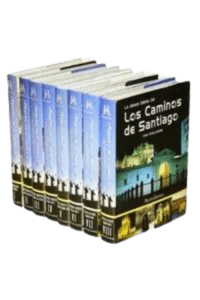
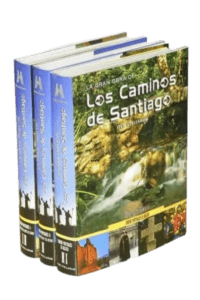
el nexo cultural entre españa y portugal
Volumes IX-XI (Portuguese way)
Portugal and Spain share much more that a geographic space in the Iberian Peninsula.
We share the same religion whose more important focus of diffusion in the Peninsula was, and still nowadays is, Santiago de Compostela.
lesser-known but exceptional routes
Volúmenes XII-XIV (Camino Primitivo y Camino Norte)
Two routes of peregrination less known but equally fascinating.
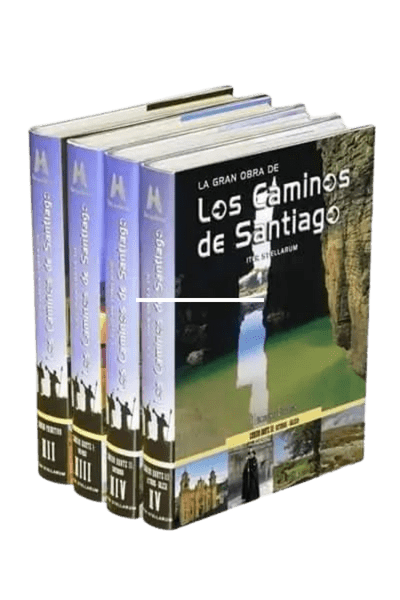
the primitive way
The Primitive Way to Compostela is the first Jacobean itinerary and it’s where it takes its name from. Oviedo was the main point of origin of the Primitive Way, but it was also followed by pilgrims from other parts of northern Spain and Europe.
the northen way
The routes from the old Kingdom of Asturias were the first to take the pilgrims to Santiago. The Northern Way was not only used by the Asturians living along the shoreline. This medieval route also gave pilgrims access to the sanctuaries of Oviedo and Santiago de Compostela. Although perhaps not as well-travelled as the French Way, the Northern Way was certainly bustling with activity until the 18th century. These pilgrims came by land from France or by sea from Northern Europe to the ports of the Basque Country and Cantabria, before setting out on their journey towards the sanctuary of San Salvador of Oviedo and the cathedral of Santiago.
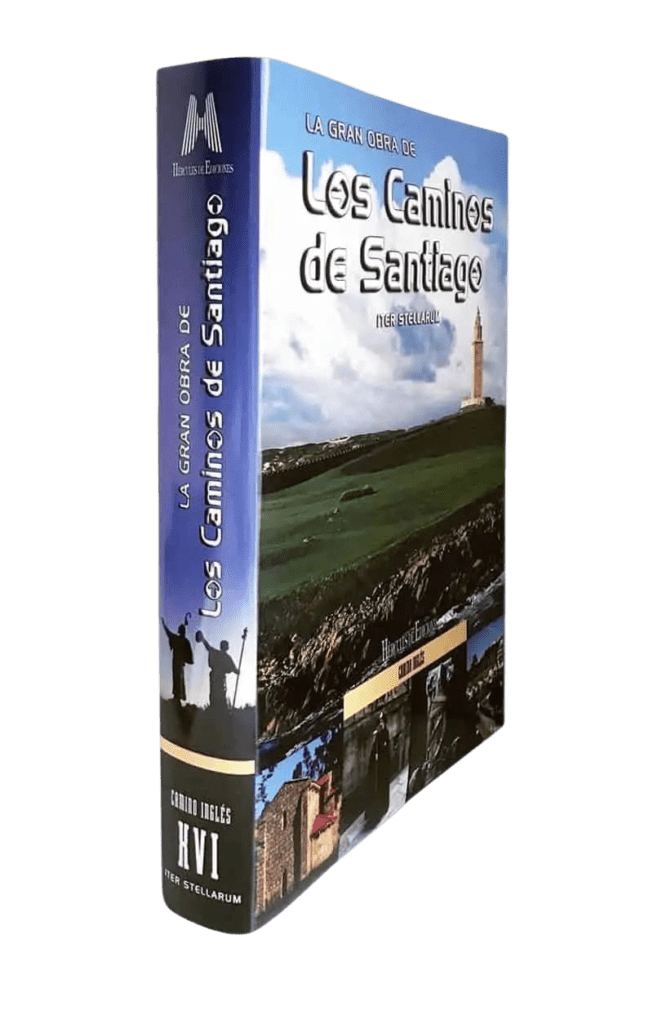
the sea pilgrimage
Volumen xvi (english way)
The Jacobean pilgrimage has always been, in history and tradition, associated with a network of land routes: large long distance public roads that converge from points far from Europe. There was “also” – and this is mentioned almost anecdotally or marginally – pilgrimages by sea.
The present volume addresses the history of these pilgrimages and the origin of the so-called “English Way of Santiago”, but also the current characteristics of this route, which has more and more pilgrims.
The so-called Camino Inglés de Santiago, a maritime-terrestrial itinerary, is a double-branched route, starting in A Coruña and Ferrol, which gives it a trace of “Y”, with a union in the Hospital area (Parish of San Lorenzo de Bruma), a small village belonging to the municipality of Mesía where formerly a hospital of pilgrims was located, of which is remembered in the toponym that gives name to the place.
A Coruña was the main route since medieval times, given that the herculine port had the privilege of entry and exit of goods and travelers, while Ferrol and other ports were a secondary option, depending, above all, on the climatic conditions for navigation . At present, Ferrol attracts more and more pilgrims.
Since 1991, when this route was recovered, with a defined itinerary, no more than a few hundred pilgrims circulated around here. But already in the Holy Year of 2010 were counted about 10,000 pilgrims who made the way in this Jacobean way, from A Coruña and Ferrol. This seems to indicate a reactivation of this route that, with the improvements made in recent years, is expected to have, each time, a greater influx.
Arousa as a singular destination of pregrination
Volume XVII (ruta marítima de arousa)
This volume analyzes the maritime route of Arousa and its origin – the “translatio” of the remains of the Apostle Santiago from Jaffa (present Tel Aviv) to Iria Flavia (Padrón) in the 1st century AD. C.-. According to the tradition, the disciples of the Apostle, Theodore and Athanasius, transferred the Apostle (that Herod Agrippa had ordered to kill) on a boat.
Centuries later the tomb of the Apostle is discovered, giving rise to the Camino de Santiago as a pilgrimage route to venerate his remains. Therefore, many defend this path as the First Way of St. James.
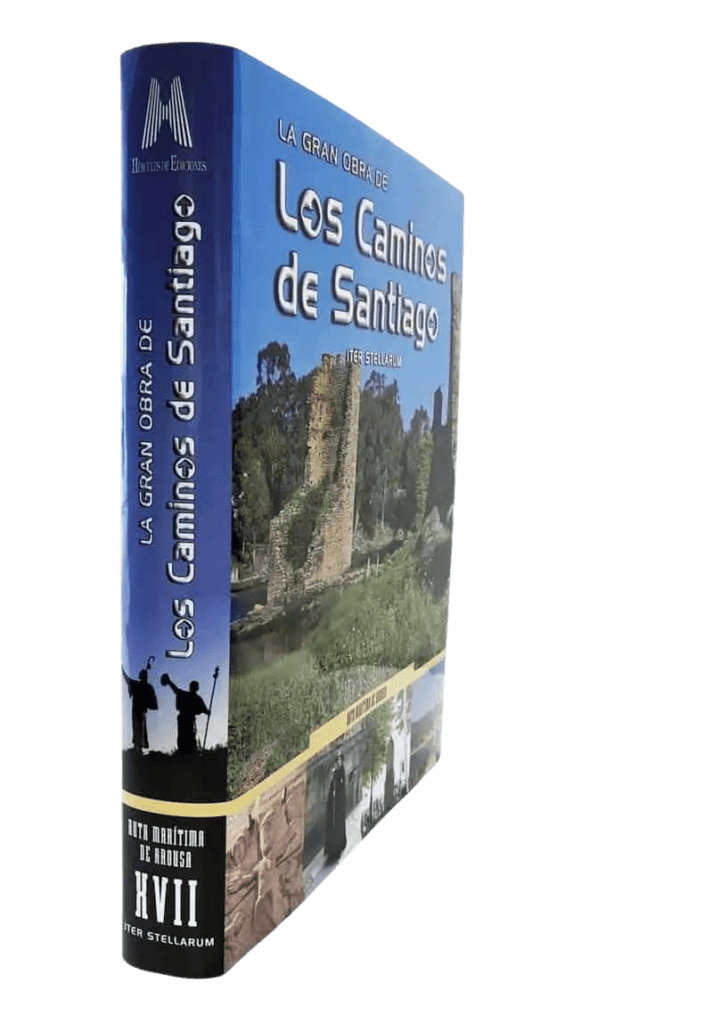
Volúmen XVIII (Caminos de Prolongación)
This volume analyzes the Pathways of Extension to Fisterra and / or Muxía, in which the pilgrims of the past and the present continue to experience something special. They feel that their pilgrimage has concluded, but that at the same time they feel that something begins here, that the sunset is nothing more than an advance, and that in their lives something begins or is born at that same moment.
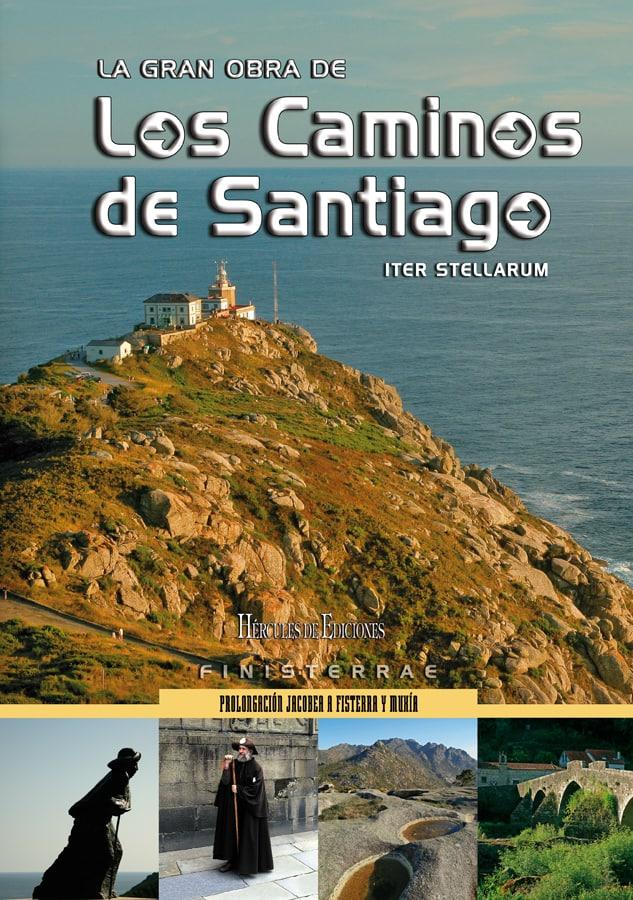
At all times the popular ingenuity and the promoters of other sanctuaries have conceived promotional slogans to benefit from the flood of Compostela pilgrims. But there is a reality that forced that variant, diversion or, as the case at hand, prolongation towards a second and new devotional goal: pilgrims of the past used to be mediated by the religious, votive or penitential component of their experience and easily they encouraged new challenges on the march to visit renowned sanctuaries for their miracles; on the other hand, it cannot be ignored that there is another indissociable motivation of the fact of moving through strange lands: curiosity.
This feeling has always accompanied the pilgrim since his vocation as an adventurer, restless traveler or, as of the 19th century, also as a tourist. They are, therefore, both reasons, devotion and curiosity, which will allow us to understand the ultimate causes of an Extension which, in the same way as the Compostela goal, has a legendary foundation.
The extension was also recommended in the cathedral of Santiago itself, as it was an act of great devotion to visit the Blessed Christ of Fisterra – there in his church in Santa María das Areas, from the seventeenth century installed in an ostentatious baroque chapel – and Nosa Señora da Barca in Muxía – with its sanctuary at the edge of the sea, also rebuilt in the 18th century. Both devotions completed an essential trilogy for any Christian, because after visiting the apostle Santiago, the figure of a privileged mediator, they prostrated themselves before the Virgin, supreme intercessor of the human race, and also before the crucified Christ, who was the immortal redeeming God himself for men.
But before the immensity of the ocean, in a majestic natural setting, Christianity had only reconverted what was previously a sacred space related, basically, with propitiatory cults of fertility. This new reading makes the fisterran scenario – understanding under this denomination the scope of the lands between Fisterra and Muxía – in a propitious place to obtain the last answers to the meaning of the pilgrimage. In fact, the presence of the infinite ocean, with no more physical possibility of walking westward, manifested itself as the great dilemma of human life in the face of the abyss of the unknown, as well as a symbol of the transit that souls have to travel, after the resurrection, towards Paradise or Hell.
